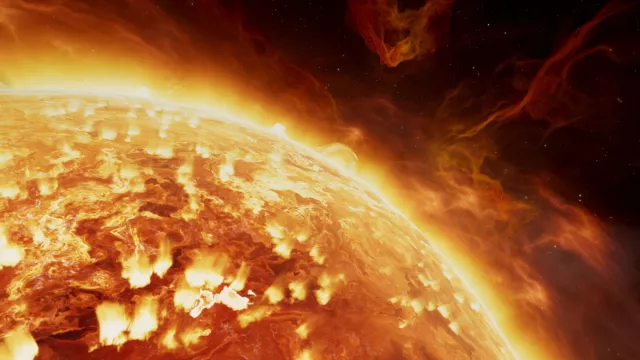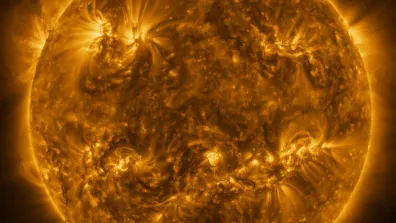Our solar system harbours eight amazingly diverse planets. One of them, Earth, has a wet and temperate climate conducive to life. Some, like Venus, are searing hothouses, while others, like Mars or Neptune, are inhospitably cold worlds.
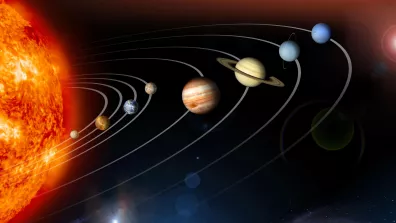
Eight very different planets
The planets in our solar system also come in different sizes. There are small planets, like Mercury, barely one and a half times larger than our Moon, and giant planets, the biggest being Jupiter, more massive and voluminous than the seven others put together. All of them circle the Sun, taking more or less longer to do so according to how far they are from our star. Mercury, the closest, takes just three months, while Neptune, the furthest, takes 165 years. The solar system also comprises five dwarf planets and a multitude of smaller wandering asteroids and comets.
A system formed under extreme pressure
The solar system formed over only a few million years, which is pretty quick given that the universe is 14 billion years old! It all began 4.567 billion years ago, when a star explosion triggered the collapse of a huge interstellar cloud. The resulting spinning ball of material subsequently flattened to form a disk of ice and dust grains. A million years later, the core of this disk had become a living hell where temperatures and pressures were so high that nuclear fusion reactions began, igniting the Sun. Around the Sun, dust grains collided and clumped together, and these clumps in turn accreted.
After 3½ million years, our solar system had taken shape, with four small planets inside the inner region of the disk and four larger ones in its outer region. In between these two groups of planets, dust and small bodies that had not accreted formed a first asteroid belt. A second one, the Kuiper Belt, formed beyond Neptune.
One in billions of billions
Fascinating as it may seem, our solar system is just one planetary system among many. It’s located in a spiral arm of our galaxy, the Milky Way, which hosts hundreds of billions of stars just like the Sun, all of them with their own retinue of planets. The star system closest to us, Alpha Centauri, is 4.37 light-years away, that is, the distance travelled by light in 4.37 years (more than 40,000 billion kilometres!).
These new worlds can be spotted by powerful telescopes, but sending space probes there is an altogether different proposition… Very few have so far ventured beyond our solar system. One such is Voyager 1, which in 2012 became the first man-made craft to get this far. Our galaxy is also far from unique, as the universe is thought to contain 2,000 billion just like it. So that means billions and billions of other planetary systems are out there.
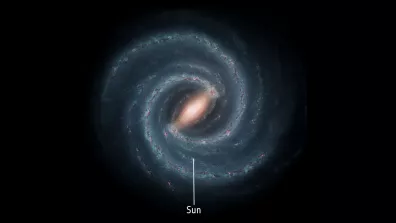
A star that moves in mysterious ways
The Sun alone accounts for 99.9% of the solar system’s total mass. This scorching sphere of gas that provides us with light and heat is not as constant as you might think. Every 11 years or so, it has a tantrum that translates into waves of giant explosions at its surface. These so-called solar flares spew out colossal amounts of energy in the form of radiation and particles like electrons and atomic nuclei.
Fortunately, Earth’s magnetic shield protects us from most of these materials, but those that do get through can harm astronauts, disrupt satellites (notably GPS satellites) and bring down entire electrical power grids. Understanding what triggers these tantrums would thus help us to anticipate them and mitigate their effects. This was precisely the role of the French Picard satellite mission launched in 2010. The U.S. Parker Solar Probe now approaching our star is expected to deliver new insights into why the Sun’s corona—its outermost layer—is much hotter than its surface.
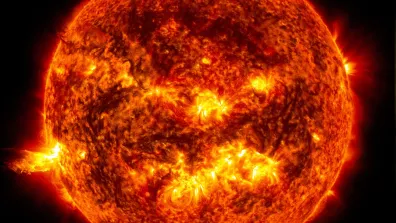
Small rockies
The four planets closest to the Sun—Mercury, Venus, Earth and Mars—are known as telluric planets, made up of rocks and metals. Mars, our nearest neighbour, intrigues scientists because it lost its magnetic field and we don’t really know why. The InSight mission, which set down a lander on its surface on 26 November 2018, is probing the planet’s internal structure in search of clues. But what’s most intriguing of all is that it wasn’t always the cold, dry planet we know today; temperatures on Mars were once tropical and water flowed there abundantly, creating conditions conducive to life. Which begs the question: did it ever actually support life? The ExoMars mission will look for signs of microbial life in Martian soil.
Unlike Mars, Mercury has a magnetic field, which is somewhat surprising for such a small planet. The BepiColombo spacecraft, scheduled to arrive in 2025, will survey its surface and probe inside it to lift the veil on this mystery.

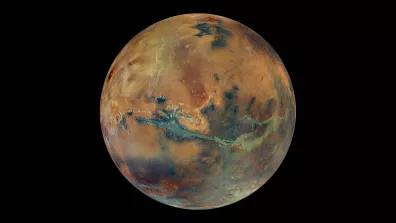
Gas and ice behemoths
The “giant” planets Jupiter, Saturn, Uranus and Neptune are more massive and voluminous than the telluric planets. Jupiter and Saturn are mostly composed of gases swirling around their core, hence the name gas giants, while Uranus and Neptune are ice giants whose mantle is mostly composed of ice.
Jupiter, the nearest to us, sports strange dark spots in its upper atmosphere. These spots are in fact very violent storms with winds of up to 400 km/h, much stronger than any hurricane here on Earth. The largest, the Great Red Spot, is thought to be ongoing since the 17th century. But we still don’t understand the underlying mechanisms fuelling these phenomenal storms.
Another mystery is Saturn’s rings, of which there are seven main ones, each made up of billions of small water ice grains, probably from the break-up of a larger icy body that came too close to the planet. The latest data from the Cassini probe will enable new insights.
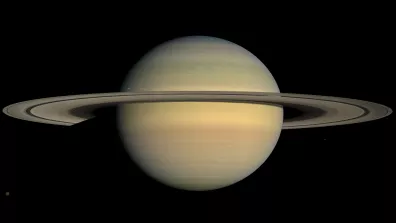
A multitude of moons
A multitude of natural satellites—more than 220 of them—are gravitating around the solar system’s planets. Some of these moons harbour sometimes salty oceans beneath their icy crust, like Europa and Ganymede, two moons of Jupiter that the JUICE probe is set to study starting in 2030. Of course the best-known of all is our own Moon, believed to have formed as a result of a body the size of Mars slamming into Earth.
Interlopers and dwarf planets
Asteroids are bodies consisting of rocks, metals and ice. Most of them lie in two belts and are remnants from the vast cloud of material that didn’t coalesce into planets. But some cross Earth’s path from time to time. An example is Ryugu, recently visited by the Japanese Hayabusa-2 probe and its MASCOT lander. Asteroids co-habit alongside dwarf planets, more or less round bodies that aren’t massive enough to have pulled other asteroids into their vicinity. Pluto is a case in point.
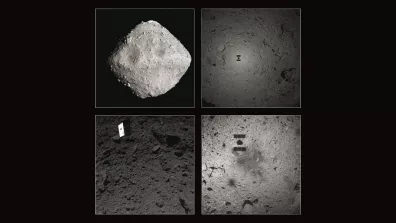
Hairy stars
As comets get closer to the Sun, some of their ice is vaporized and forms a majestic tail. While some are from the Kuiper Belt, others come from much further afield, a vast region known as the Oort Cloud. Like asteroids, comets formed at the same time as the solar system, so studying them is a good way to understand its history and how water—and life—came to Earth, probably in part brought by comets, along with the molecules required for life to emerge. The Rosetta mission helped scientists to refine their hypotheses during its investigation of comet Churyumov-Gerasimenko.
Ongoing missions will deliver a wealth of data to help scientists gain greater insights into the solar system, but there will no doubt still be plenty of mysteries to resolve for future generations!
Quiz
What is the smallest planet in the solar system?


